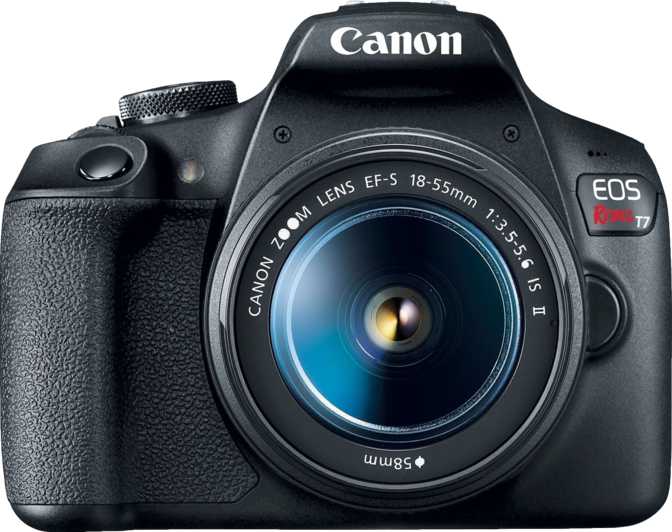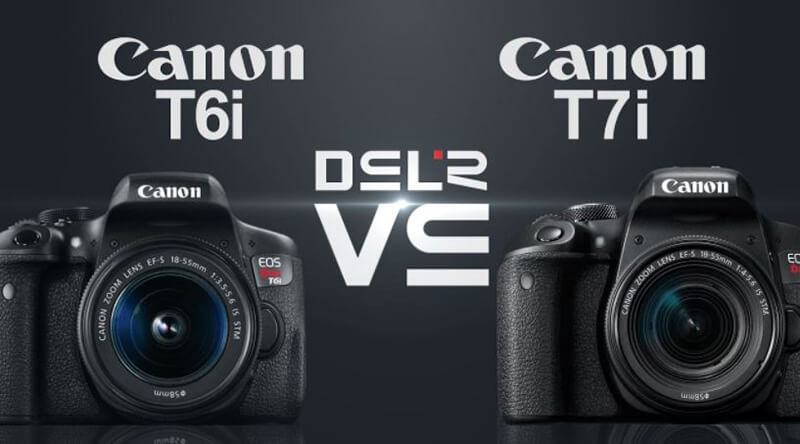There are now 113 lenses available for the Canon EF/EF-S mount that include image stabilization. Whenever it comes to purchasing a new digital camera, Canon is without a doubt the most well-known brand available on the market. The brand is well-known for offering high-performance cameras that are easier to use and have a variety of useful functions. According to the following table, there are a few more significant similarities and differences between this Canon T7, the Canon T7i, and other comparable cameras. We do not anticipate a significant technological difference between the Canon T7i and the Canon T7.

Video bloggers and photographers who are interested in capturing selfies will find this feature to be very useful. For image storage, the T7 and its successor, the T7i, both use SDXC cards as its primary storage medium. The T7i is capable of supporting UHS-I cards (which can transmit data at speeds of up to 104 MB/s), but the T7 is unable to take use of Ultra High Speed SD cards. Phase detect pixels are included into the T7i sensor, allowing for quick and accurate autofocus acquisition even while using the camera in live view mode.

It implies that you will be able to manage the camera exclusively via the use of buttons and knobs, rather than utilizing the more intuitive touch control interface. It’s also worth noting that, while using the T7 in Live View mode, you won’t be able to adjust the screen for a better view if the camera is not at eye level with the subject. Because none of these bodies are equipped with sensor-based image stabilization, you will need to purchase lenses that provide optical stabilization.
Even the cameras’ viewfinders have the same field of vision as the cameras themselves. Both the Canon EOS Rebel T7 and the Canon EOS Rebel T7i are DSLR cameras from Canon’s Rebel range of DSLR cameras, as is indicated by their names. This series of APS-C cameras, which began with the Canon EOS Digital Rebel in 2003 and has grown to become the backbone of Canon’s domination in the digital camera industry, has proven to be a huge financial success for the company. Moreover, the strong brand recognition of Canon, as well as its extensive EOS system of compatible lenses and accessories, add to the popularity of Rebel cameras, particularly those from the Canon T7 and T7i series of cameras.

Neither of these cameras will win any prizes for video quality, particularly at a time when so many other cameras have already adopted the 4K resolution standard. Both cameras have external controls that are almost identical, however the positioning of important buttons differs significantly between the two. In addition, the T7i includes a touchscreen that is completely articulating, while the T7 has a fixed screen that is not touch sensitive. Assisted by its more powerful processing engine, the T7i offers a standard sensitivity range of ISO,600 for still images, which is two stops higher than the T7’s normal sensitivity range.
Nowadays, many photographers place a high value on having a lightweight camera; in fact, it is more important than the camera’s price or overall quality. It has a weight of 16.7 ounces, which is much less than the 18.7 ounces that the T7i has. In terms of physical dimensions, it is also somewhat smaller than the T7i, despite the fact that the two cameras have exactly the same viewfinder size. In addition, the lens options and lens attachments on both cameras are similar.

The T7i, on the other hand, offers a wider variety of frame rates, including 59.94 frames per second for slow motion playback. Compared to the T7, the Rebel T7i has 45 cross-type AF points, which is a significant improvement over the T7 in terms of the focusing system that is accessible while utilizing the viewfinder to create photographs. In addition to allowing you to aim the subject more accurately, the T7i’s 36 additional points improve the camera’s ability to follow a subject across the frame. Because cross-type points are more sensitive than normal linear points, the T7i is better at latching onto a topic than the conventional linear points. Because the sensor sizes of the Canon T7 and Canon T7i are the identical, when used with the same focal length and aperture, they will allow the same amount of control over depth of field.

OVFs have no time lag and use no power, in contrast to electronic viewfinders, which may deplete a camera’s battery’s capacity. The two cameras were released less than a year apart, with the Rebel T7i being the first to hit the market in February 2017. APS-C format sensors with 24-megapixel resolution are found in both cameras, as is Canon’s EF-S lens mount, which makes them directly compatible with Canon’s extensive line of EF-S and EF lenses. The two models, on the other hand, have some substantial differences that might make one more appealing than the other, so let’s have a look at how they compare to see which one is more appealing. The overall judgments of some of the most prominent camera review websites are summarized in the table to the right of this paragraph (amateurphotographer , cameralabs , digitalcameraworld , dpreview , ephotozine , photographyblog ).
The following side-by-side comparison compares the physical dimensions and weight of the Canon T7 and Canon T7i cameras. There are three sequential viewpoints available: from the front, from the top, and from the rear. All width, height, and depth measurements are given to the nearest millimeter unless otherwise stated. Slow-motion is an artistic video effect that gives the impression that time is moving more slowly. It is accomplished by recording a video at a frame rate that is greater than the typical playback rate of 24 or 30 frames per second.

This may be used to catch moving objects by employing a rapid shutter speed, or to shoot photographs in low light without the need of a flash, among other things. Anyone who has used a Canon DSLR in the recent past will be acquainted with the menu structure and interface of the Rebel T7, which is organized in a sensible manner. When you first turn on the T7i, it is set to Guided mode, but you may easily change this setting to Standard mode if you like.

When you use autofocus tracking, after you have chosen your subject and pressed the shutter release halfway down, the autofocus will follow your subject as it moves. The greater the number of focus points, the greater the degree of freedom in selecting whatever area of the picture to concentrate on. They also increase the likelihood that the image sensor will correctly identify the correct portion of the picture to focus on while operating in more automated settings. Improve the quality of your life In this fast-paced world of technology, Digital Trends helps readers stay on top of everything by providing the latest news, entertaining product reviews, thought-provoking editorials, and one-of-a-kind sneak peeks. DPAF, like the Feature Assistant, is something that would have made sense to introduce on the T7 since it is a quality of life feature that makes things much simpler for newcomers to navigate through.
Beginning photographers will find it the most user-friendly model due to the addition of the new Feature Assistant, simplified wireless networking, articulating touchscreen, and Dual Pixel Autofocus. Additionally, aspiring photographers will enjoy that the T7i has substantially more opportunity for development, thanks to a higher-density focusing mechanism in the optical viewfinder, speedier performance, and a significantly broader ISO range. It also offers a minor advantage in terms of picture quality, which will suit pixel peepers who like to push their equipment to its utmost. Despite the fact that it is an older model, the Rebel T7i is designed on more modern technologies. It is equipped with the same 24-megapixel sensor and 49-point focusing technology as the legendary EOS 80D, which was one of the greatest enthusiast DSLRs we’ve ever tested in our lab.

